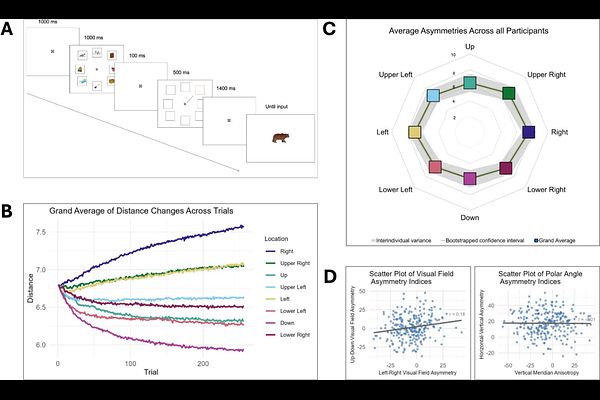Visual Field Inhomogeneities Shape Visual Working Memory

Visual Field Inhomogeneities Shape Visual Working Memory
Papiernik-Kłodzinska, J.; Del Pin, S. H.; Wierzchon, M.; Carrasco, M.; Rutiku, R.
AbstractIt is a topic of scientific debate whether early visual cortex (V1) is essential for creating visual working memory (vWM) representations. The current study aimed to replicate and expand previous research regarding the role of structural properties of V1 in vWM retention. Structural properties of V1, particularly visual field inhomogeneities (including visual field and polar angle asymmetries), were investigated to link interindividual differences in vWM performance to V1 structural differences. 292 participants underwent the MRI scan with the multiparametric mapping sequence, resulting in four microstructural maps per participant: magnetization transfer (MT), proton density (PD), longitudinal relaxation rate (R1), and transverse relaxation rate (R2*). During a separate session, the participants performed the vWM task. Both visual field and polar angle asymmetries were present in our dataset. We replicated behavioral asymmetries in vWM shown in previous studies, particularly the inverted polarity of the vertical meridian asymmetry (VMA) and found a link between VMA and R2* values in V1. This suggests a potential role of cortical iron content in V1 for vWM, particularly along the vertical meridian of the visual field, supporting the sensory recruitment hypothesis, thus indicating that early visual areas are crucial for vWM retention.